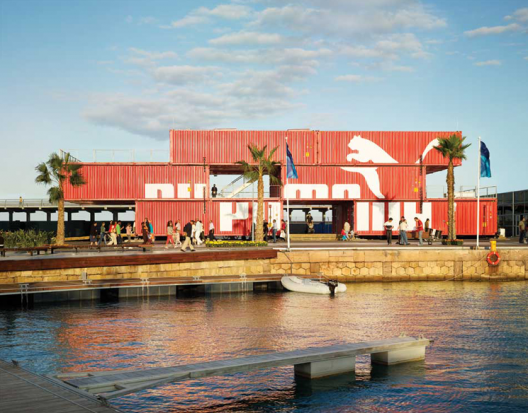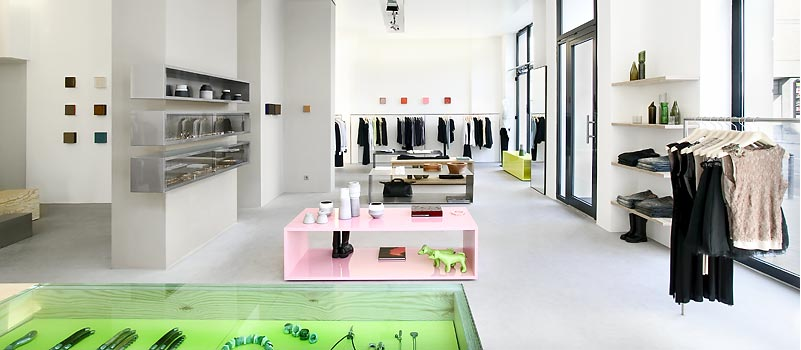




The design by Austrian architects Coop Himmelb(l)au for the Central Los Angeles Area High School #9 for the visual and performing arts has completed and will open in September 2009 for the new term.
Central to the building is the suitably dramatic theatre which holds just short of 1,000 audience members and will be open to the public as well as the 1,800 students providing a public space which was previously lacking in the Grand Avenue area.
Each student is matriculated within one of four academies representing each of the arts disciplines, accordingly there are 4 separate classroom buildings as well as the theatre, the library and the cafeteria making up the seven building campus.
Coop Himmelb(l)au’s design concept is to use architectural signs as symbols to communicate the commitment of the Los Angeles community to Art. Like chess figures three sculptural buildings, which relate to the context of downtown Los Angeles and the program, redefine spatially and energetically the otherwise orthogonal arrangement of the master plan. A Tower figure with spiralling ramp in the shape of the number 9 located on top of the theater’s flyloft serves as a widely visible sign for the Arts in the city and a point of identification for the students. Inside the tower, an event, conference and exhibition space with a view across the city is planned to be located.
via WAN











































